AMD EPYC 7F52 Additional Systems Context
Beyond our numbers, AMD also offered a few systems updates alongside the IBM Cloud instance announcement. Some of those updates included performance claims so we wanted to at least offer these slides for our readers’ consideration.
First, although we have seen a number of EPYC 2U 4-node server offerings, they have been slower to gain adoption in the blade market. The Supermicro SuperBlade will offer an AMD EPYC solution supporting up to 280W TDP CPUs and PCIe Gen4. That 280W TDP range means these 7Fx2 CPUs will be supported, as well as 280W TDP parts such as the HPC focused AMD EPYC 7H12 part.
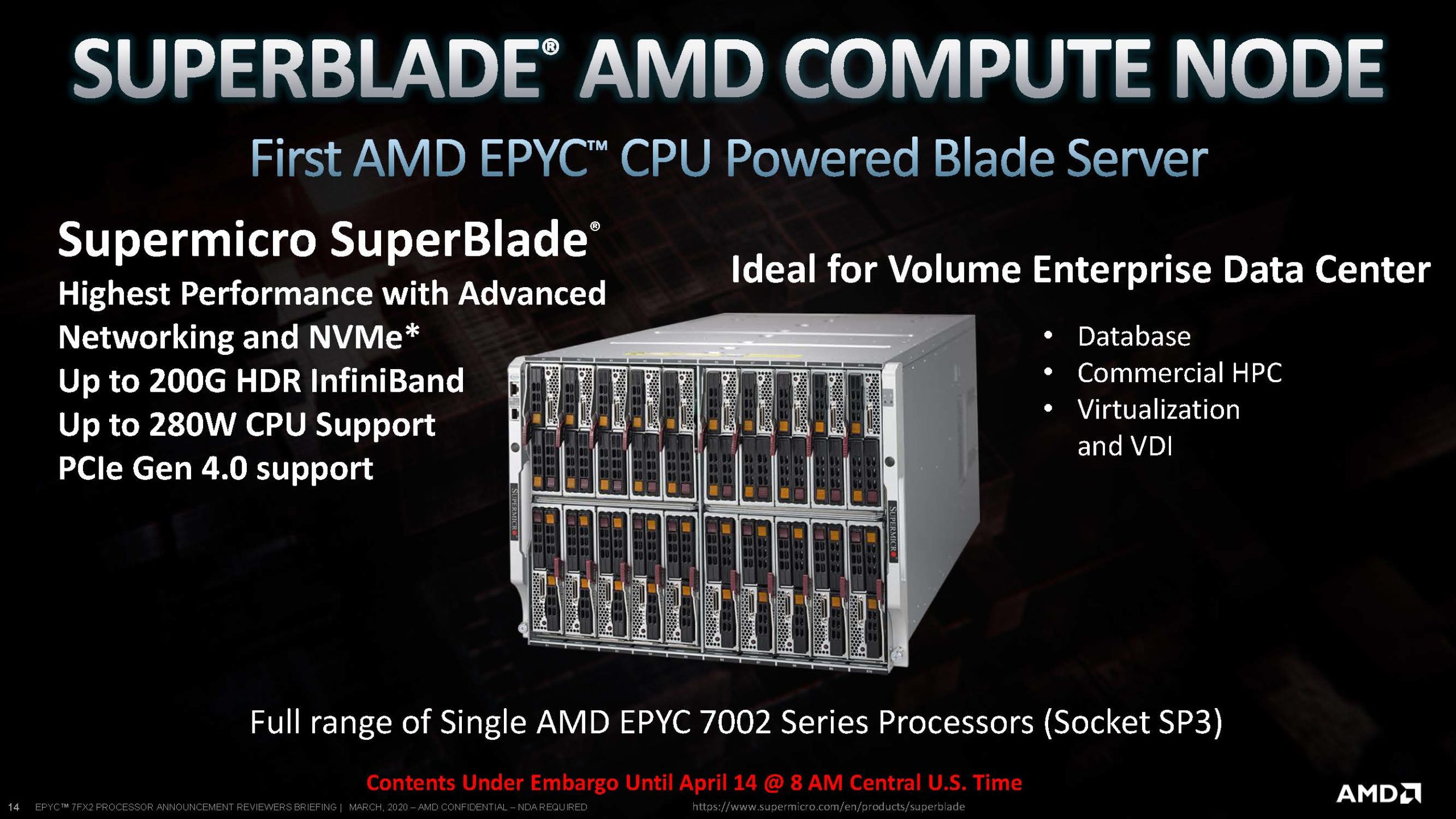
As a quick note here, while Supermicro offers SuperBlade nodes with dual Intel Xeon sockets, it is only offering a single-socket AMD EPYC 7002 node at this time. One can still use up to 64 cores in that socket, more than the up to 56 cores in a dual-socket 2nd gen Intel Xeon Scalable system, but there is currently not a dual-socket solution available.
On the HPE side, HPE ProLiant DX servers will be available in Q3 with Nutanix Hyper-converged infrastructure (HCI) software. Nutanix has a strong customer base so this will bring EPYC into that ecosystem on a fully supported solution.
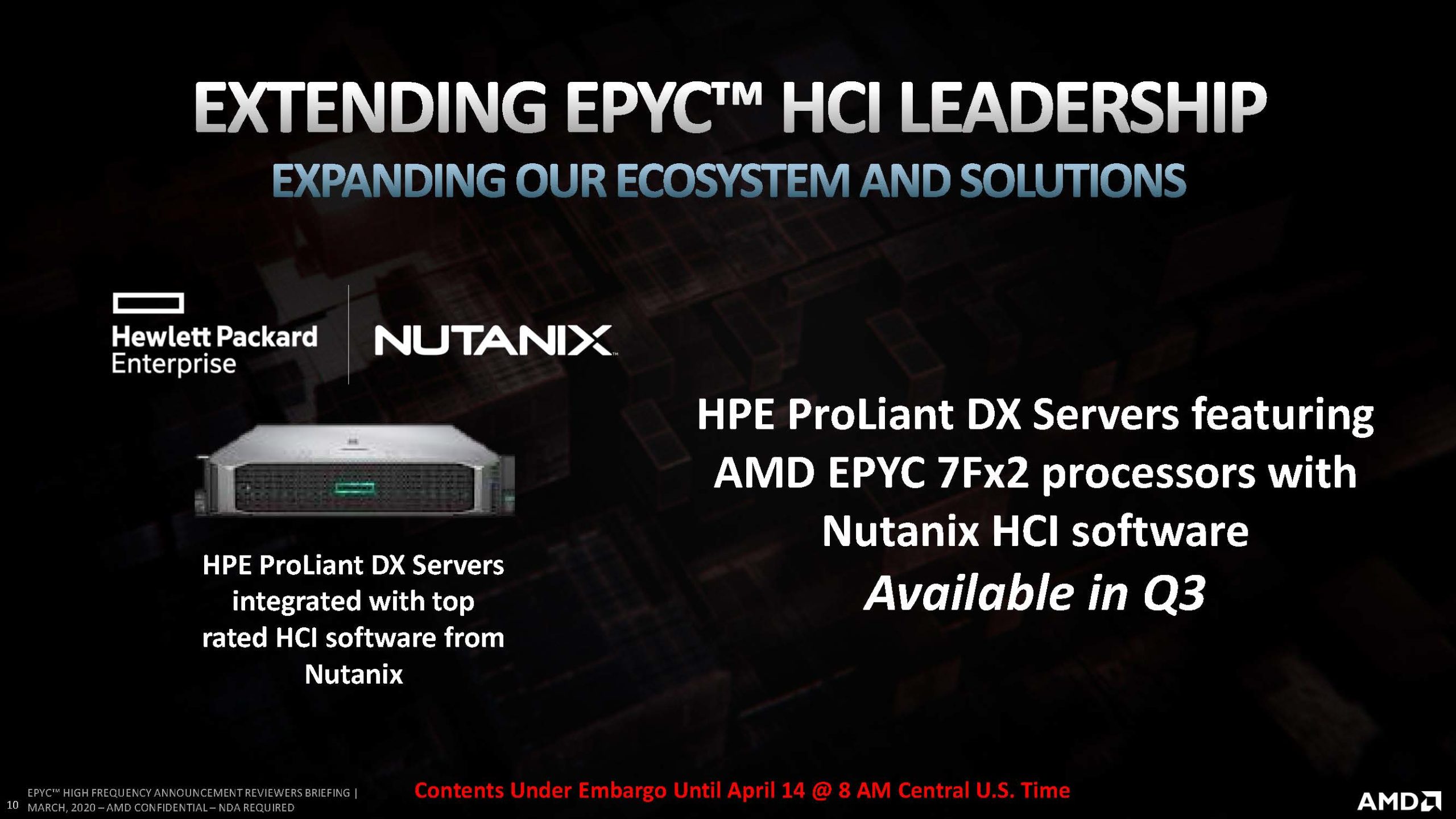
For its part, Dell EMC is showing off its dual-socket capable PowerEdge R6525 system with VMware HCI and showing record VMmark 3 scores.
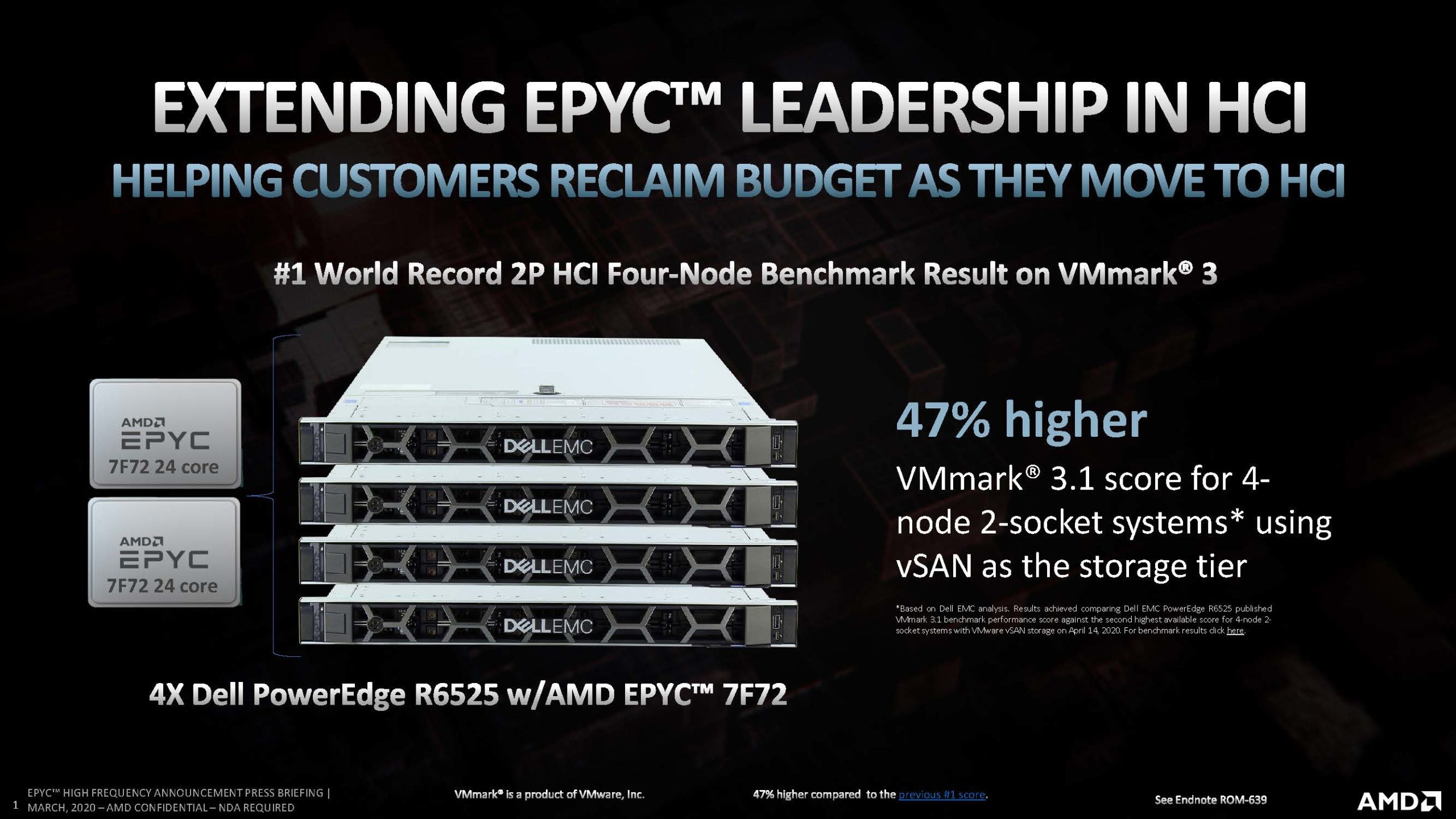
The new AMD EPYC 7F72 CPUs are making their way into the IBM Cloud. These are the 24-core 192MB L3 cache parts.
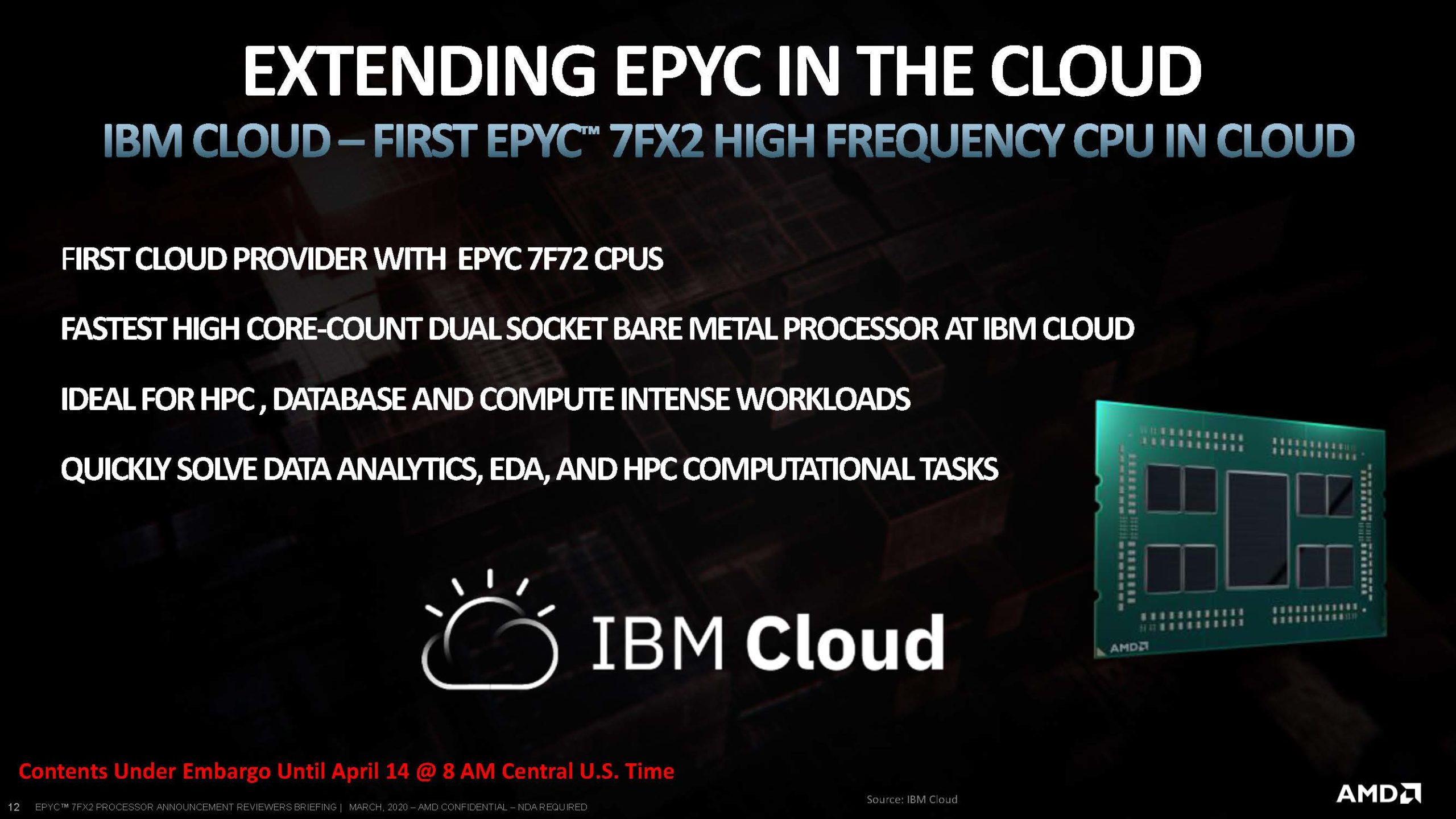
Incrementally we are seeing more movement toward offering AMD EPYC solutions. AMD is tracking this growth and we can see the impact that the “Rome” generation has had.
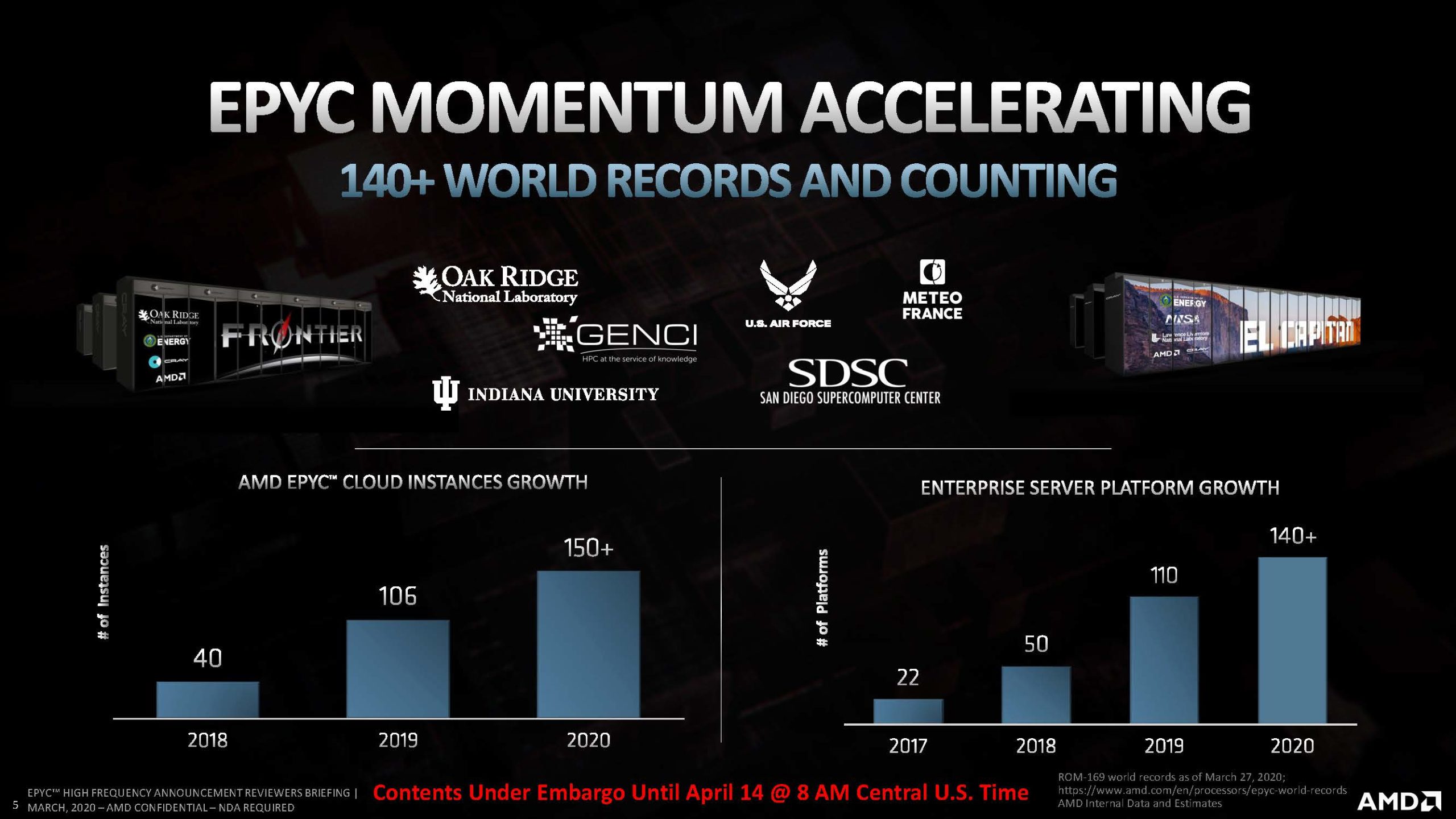
It is fairly clear that the slow-moving data center IT market is accelerating EPYC adoption with Rome.
AMD EPYC 7F52 Test Configurations
For our testing, we utilized both single and dual-socket configurations to show different aspects of performance, check the 1P story, and gain access to both of our comparison sets.
Test Configuration: Single Socket
For most of our charts, we are using the Tyan Transport SX TS65A-B8036.
- Platform: Tyan Transport SX TS65A-B8036
- CPU: AMD EPYC 7F52
- RAM: 8x 32GB Micron DDR4-3200 RDIMMs
- OS SSD: 400GB Intel DC S3700
- Data SSD: 960GB Intel Optane 905P
You are going to see more about this platform, but this is a PCIe Gen4 single-socket platform from Tyan that has 16x front U.2 NVMe bays, 10x front SATA/ SAS bays, two rear 2.5″ SATA OS SSD bays, six expansion slots on risers and an OCP mezzanine slot. All this is achieved using a single AMD EPYC 7002 series CPU.
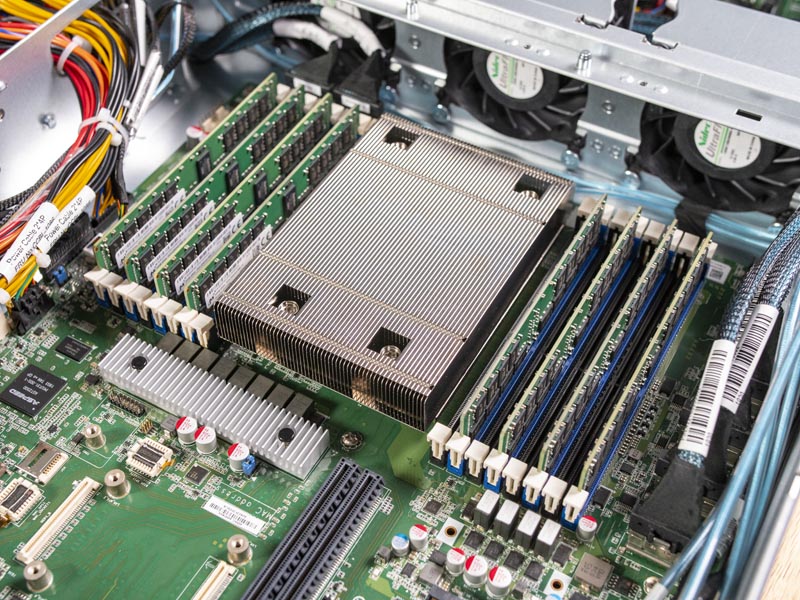
Some servers are not going to be designed to accept such high-power CPUs so one needs to watch out for those when shopping for servers. On the single-socket side, it is less of a concern. In form factors such as 2U 4-node, it will be a bigger concern.
Just to note, the topology picture above was using this server to show a single CPU to keep things simple.
Test Configuration: Dual Socket
We also had a test configuration for dual-socket processors. We have been using the AMD “Daytona” reference platform and we had the latest AGESA for this as well.
- Platform: AMD “Daytona” Reference Platform
- CPUs: 2x AMD EPYC 7F52
- RAM: 16x 32GB Micron DDR4-3200 RDIMMs
- OS SSD: 400GB Intel DC S3700
- Data SSD: 960GB Intel Optane 905P
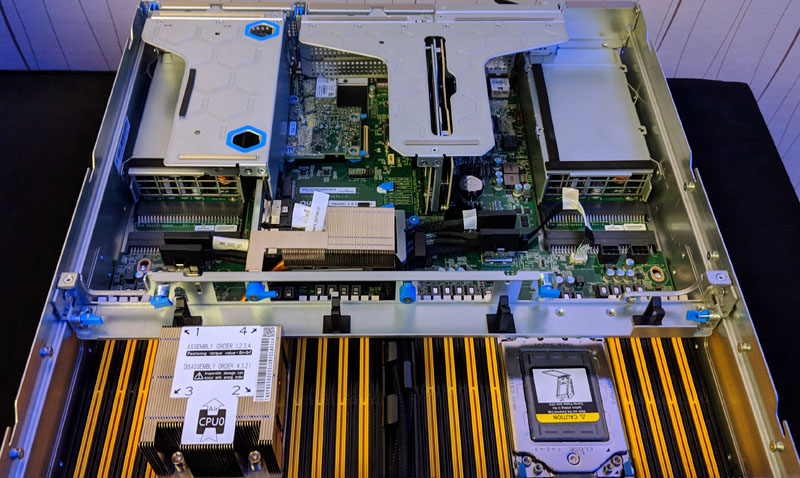
Note, this platform looks a lot like the Quanta AMD EPYC Rome Servers Set to Make a Splash that we covered on a Q4 2019 visit to Taipei, Taiwan.
How the Processors Arrived
Typically, when we get processors we consider ourselves lucky to get a tray with chips. For this launch, AMD went the extra mile and we received the chips in a hard case.
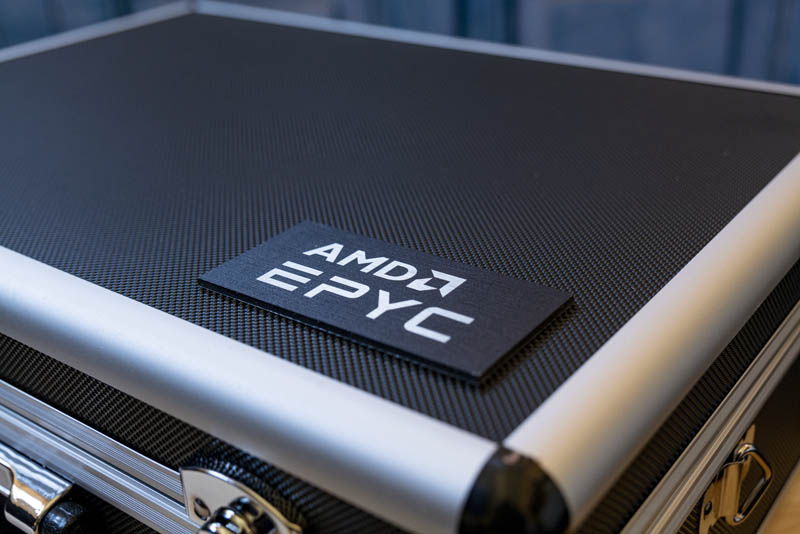
Opening the case we found the two EPYC 7F52 CPUs and a little bit of marketing spin.
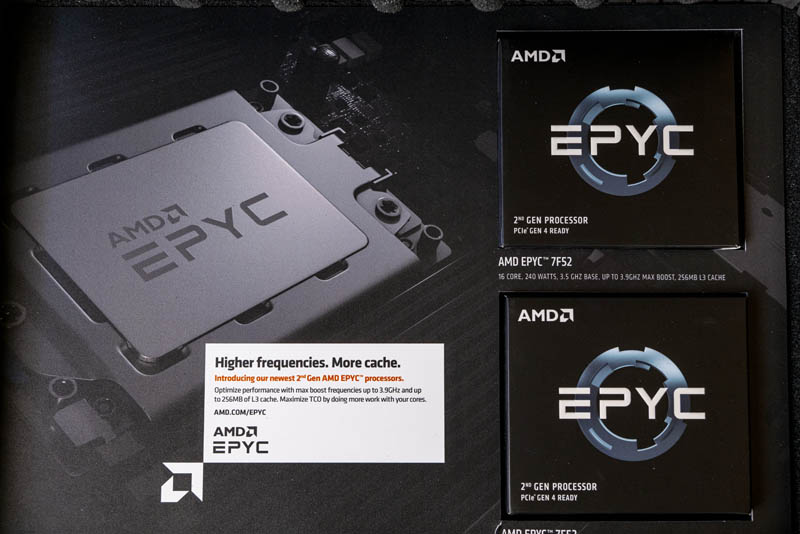
This was a fun treat that is common on the consumer hardware review side but very uncommon in the realm of servers. Frankly, this is something that we do not want to get with every release. 25-50 hard cases a year would be too much. At the same time, this presentation was awesome to unbox even if it is not going to be the typical customer experience.
Next, let us get to performance before moving on to our market analysis section.




These are the SKUs that should be thought of as True Workstation class parts and the higher clocks are welcome there along with the memory capacity and the full ECC memory types support.
So what about asking Dell and HP, and AMD, about any potential for that Graphics Workstation market segment on any 1P variants that may appear. I’m hoping that Techgage can get their hands on any 1P variants, or even 2P variants in a single socket compatible Epyc/SP3 Motherboard(With beefed up VRMs) for Graphics workloads testing.
While in the 7F52 each core gets 16MB of L3 cache, that core has only 2048 4k page TLB entries which only cover 8MB. It would be interesting to see how much switching to huge pages improves performance.
I find the 24 core part VERY interesting, just wish they released P versions of the F parts.
Your 16 core intel model is wrong.
16 cores from a 28 core die could still be set up to have the full 28 cores worth of L3 Cache.
Hi Jorgp2 – this was setup to show a conceptual model of the 16-core Gold 6246R which only has 35.75MB L3 cache, not the full 38.5MB possible with a 28 core die
Hi ActuallyWorkstationGrade, if you are going to convince HPE/Dell about 1CPU workstation then IMHO you will have hard fight as those parts are more or less Xeon W-22xx competitive which means if those makers already do have their W-22xx workstation, then Epyc workstation of the same performance will not bring them anything. Compare benchmark results with Xeon W-2295 review here on servethehome and you can see yourself.
Sometimes I read STH for the what. In this “review” the what was nowhere near as interesting as the “why”. You’ve got a great grasp on market dynamics
whats the sustained all core clock speed
I have said it before and this release only highlights the need for it:
You need to add some “few thread benchmarks” to your benchmark suite !
You are only running benchmarks that scale perfectly and horizontally over all cores. This does not massage the turbo modes of the cores nor highlights the advantages of frequency optimized SKUs.
In the real world, most complex environments are built with applications and integrations that absolutely do not scale well horizontally. They are most often limited by the performance and latency of a lot fewer than all cores. Please add some benchmarks that do not use all cores. You can use exisiting software and just limit the amount of threads. 4 – 8 threads would be perfectly realistic.
As you correctly say, the trend with per core licensing will only make this more relevant over time. Best is to start benching as soon as possible so you can build up some comparison data in your database.